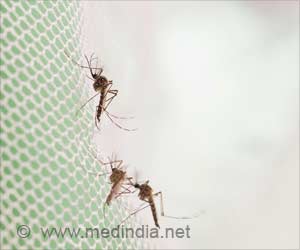Air pollution in the Indian capital and its satellite cities has reached alarming levels.
Air pollution in India’s capital New Delhi is well known. But what is new is that satellite cities too are the situation is turning grim.
One in ten across the region has asthma, majority of them suffer from eye irritation, cough, sore throat, shortness of breath and poor lung functioning, according to a recent survey by the Central Pollution Control Board and the All India Institute of Medical Sciences reveals.The winter months bring respiratory attacks and wheezing to many non-asthmatics who are old, who smoke, have respiratory infections or chronic bronchitis.
But asthmatic children are among the worst affected. Four-year-old Sanchali Srivastava, studying in an upmarket school in has to carry an inhaler in her schoolbag every day to control her frequent wheezing and asthma attacks.
Her wheezing keeps her parents up most nights. The mother has asthma as well. “I cough a lot in class and all my teachers know I’m not well. At times, I can’t breathe at all,” said Sanchali. “It is not nice but I can’t help it. I don’t like it when I can’t swim like my friends,” she says.
"She hasn’t been sleeping well. The doctor used a nebulizer last night as the breathlessness was making it impossible for her to eat or sleep,” says her father Sanchal Srivastava.
A nebulizer is a device used to administer medication to people in forms of a liquid mist to the airways. Also called "atomizers," they pump air or oxygen through a liquid medicine to turn it into a vapor, which is then inhaled by the patient.
Advertisement
The couple live in Faridabad, a satellite city. They had shifted there two years ago after their daughter was diagnosed with asthma. “Delhi’s air is very polluted, and Gurgaon is as bad. My wife developed asthma after she got married and moved to Delhi from Gorakhpur in Uttar Pradesh at the age of 23. We moved to the suburbs because we thought the air would be cleaner, but Faridabad’s proximity to Delhi and the development boom is making things as bad here,” says Sanchal, who drives three to four hours each day to reach his Gurgaon office.
Advertisement
Rupali is a full-time mom because she has to keep an eye on her daughter. “I worked part-time for a while after Sanchali was born but had to give it up because I was needed at home to ensure she was okay. I don’t really mind,” she says.
Ishan Jain, 5, will have to live with this at his Gurgaon home. He still cannot hold a pencil right but effortlessly uses an inhaler and a nebulizer.
He began wheezing within days of his parents moving from Chennai to Delhi three years ago. “I cannot breathe most of the time, it is as if an elephant is sitting on my chest,” he says.
There are innumerable such tragic cases reported from the national capital.
According to the World Health Organisation, pollution causes 777,000 deaths worldwide every year, 531,000 of them in Asia.
“The cold combined with chest infection worsens symptoms of breathlessness and can cause respiratory failure even in people who are not chronic asthmatics,” points out Dr JN Pande, former head of the Department for medicine, AIIMS.
“The winter smog is back this year. What do you expect? Delhi has 4 million registered vehicles, with another 1,000 being added to the roads each day,” says Sunita Narain, director of Centre for Science and Environment.
Efforts to control air pollution by introducing tighter Euro II standards for vehicles, lowering of sulphur content in fuel, introducing compressed natural gas for public transport and re-routing trucks outside the city did make some difference, but not for long.
“Despite all these moves, the sheer number of new vehicles negate all the gains. We need to address new challenges such as the boom in the number of private vehicles, and in particular, diesel vehicles,” says Narain.
But who is going to bell the cat?
Source-Medindia
GPL/M







